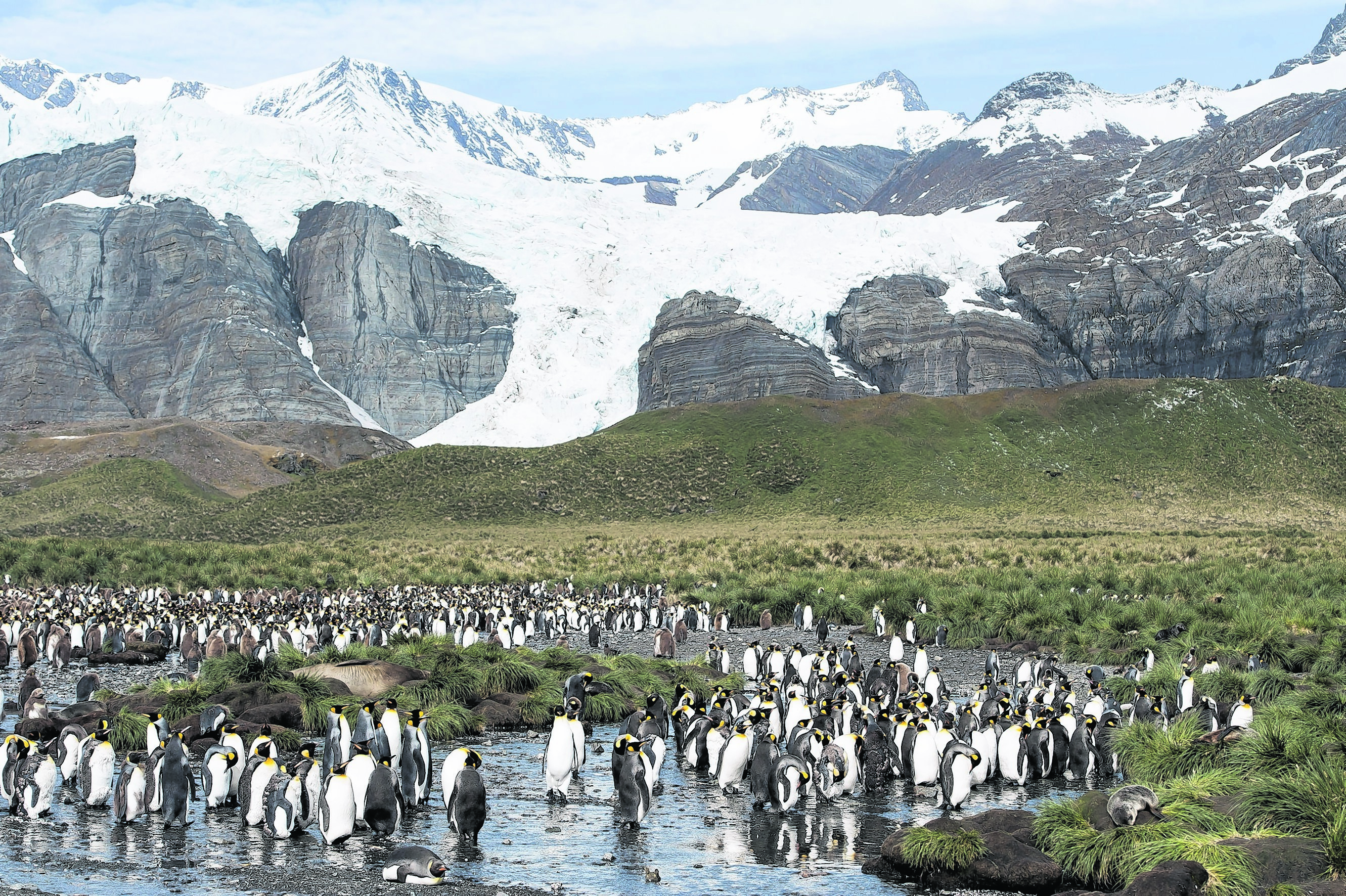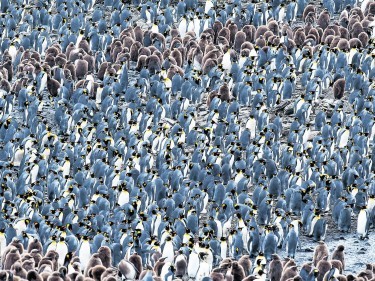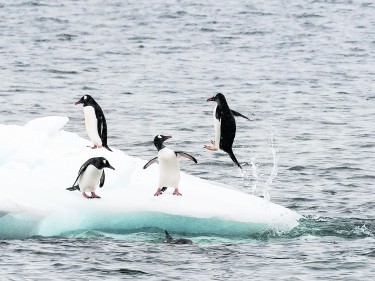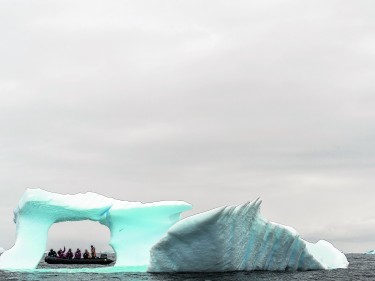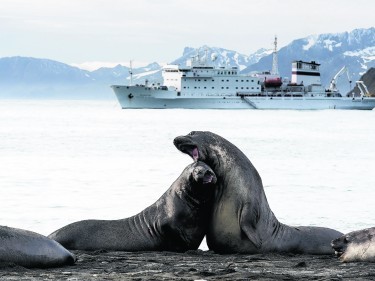In the run-up to World Penguin Day, Sarah Marshall visited the loveable birds’ breeding grounds in the Falklands, South Georgia and seventh continent, Antarctica
In the case of most wildlife-themed holidays, there’s always a degree of uncertainty about what you might see. That’s nature. But on a trip to the Falklands, South Georgia and Antarctica, it’s a sure bet you’ll encounter not just one, but thousands of the flightless birds that have charmed us through nature documentaries, cartoons and greetings cards.
Ahead of me, 80,000 pairs of king penguins have formed a river of black and golden feathers, tumbling down the hillside at South Georgia’s Salisbury Plain. The foul stench of guano is even heavier than the gloomy clouds choking the sky, and the shrill of trumpeting kings chastising their ever-demanding chicks suggests pandemonium.
We’ve hiked for 40 minutes across muddy terrain to reach the colony, through thick tussocks littered with agitated fur seals and their marble-eyed pups, who inquisitively swivel heads 180 degrees to look up at you.
King penguins breed every three years, during different seasons, so we encounter chicks at all stages of development. Some are still wrapped in fluffy down, like Italian signoras in winter fur coats, while others are moulting, shedding curled up feathers like locks on the floor of a barber’s shop.
Home to only a handful of scientific researchers, South Georgia is one of the biggest marine protection areas in the world and a breeding ground for 30million seabirds. I’m one of the 7,000 privileged tourists visiting each year, stopping by as part of a 19-day voyage to Antarctica with One Ocean Expeditions.
Our expedition ship, the Vavilov, is a Russian research vessel fitted with sensors on the hull to collect data during our journey, but with a bar, sauna and hot tub on board, we’re by no means roughing it.
The loose, subject-to-change itinerary for the next two and a half weeks will follow the footsteps of celebrated polar explorer Ernest Shackleton, whose Trans-Antarctic Endurance expedition was crushed by sea ice exactly 100 years ago. But as one guest whispers to me in hushed tones, “Let’s be honest – most of us are really here to see the penguins.”
We’re likely to encounter six species of penguin on our trip, all with their own amusing eccentricities, but one of the most entertaining has to be the spiky-haired rockhopper. Three-quarters of the world’s population can be found on the Falklands, an archipelago 300 miles east of southern Argentina, and the first stop on our trip.
One of the most scenic rookeries, shared with the elegant black-browed albatross, is at West Point Island. We weave through a maze of tussock mounds, where the noisy neighbours surprisingly seem to tolerate each other in confined conditions. Eyes blazing red and chests puffed out, the diminutive rockhoppers bicker incessantly while the much larger – and calmer – albatrosses preen feathers and tend to their young.
Couple Thies and Kicki, who have spent the last 25 years travelling the world in their 62-year-old yacht, Wanderer III, are the only residents on the island. West Point’s 87-year-old owner, Roddy, invited them to be caretakers two years ago, and the couple now spend days fixing fences and preparing afternoon tea (served on 160 pieces of mismatched crockery) for the 20 tourist ships that pass through in a season (October to March).
As she drives us across the island in her rusty 4×4, Swedish-born Kicki tells me: “Twenty years ago, we’d never have believed we would find a place like this beautiful. But it’s grown on us.” Imagining what it must be like when the cruise ships have departed and penguins are the only company, I’m envious.
The following three days are spent at sea watching albatrosses, petrels and tiny prions riding on our tailwinds and darting through the crests of waves, until we reach the most nutrient-rich sector of the Antarctic Ocean, South Georgia.
At one time, the waters here were full of humpback and blue whales, but a thriving whaling industry decimated the population in a matter of decades. Now, the derelict rusty stations are once again overrun by wildlife.
At sheltered harbour Grytviken, where there’s a small maritime museum and post office selling its own issues of stamps, I find kelp gulls perched on blubber ovens and penguins wandering through the rubble. A bulbous elephant seal (a creature I’m sure provided the inspiration for George Lucas’ Jabba the Hutt) slithers across Shackleton’s grave, set on the hillside, and lets out a snort from his salt-crusted nostrils.
We find more of the blubbery pinnipeds at Gold Harbour, a glorious snapshot of the wild chaos and community that shapes South Georgia. While the serious beachmasters may have long since departed (you’ll find them here in October/November), adolescent male elephant seals rear up to play fight, while opportunistic skuas try to pick off vulnerable chicks from a colony of king penguins, and orange-billed gentoos hurriedly go about their business. It all takes place against a dramatic backdrop of calving glaciers, deep blue sky and rolling surf.
As we leave South Georgia, we pass a mile-long tabular iceberg that’s taken several months to travel from our next destination, Antarctica. Eulogised by explorers with frosty white beards, it’s the coldest, windiest and driest continent on Earth; a hostile wilderness that belongs to no-one except, of course, the penguins.
The burning red light of dawn wakes me at 2.30am, as we enter the Antarctic Sound, an unspeakably beautiful stretch of water separating the Antarctic peninsula from nearby islands. From the stern, I watch gentoos diving from icebergs and scrambling back up again, as we glide past opalescent snowy mountains, smoothed by the wind into perfect cones.
Later that day, we make our first continent landing at Brown Bluff, where jagged rocks jut out like a lower set of incisors. Cape petrels engulf our Zodiac dinghy as we head for the shore, where Adelies and gentoos are nesting. I pass the skeleton of an emperor – a penguin that’s near impossible to see, unless you’re extremely lucky or have £30K to spend on an expedition further into the continent – then I sit for more than an hour watching the penguins get down to the crafty business of stone stealing.
The precious building material is used to construct nests, and someone else’s stone is always more appealing. Some do it surreptitiously while others are shameless, happy to perpetrate the crime in full view of their angry neighbours.
It’s impossible not to anthropomorphise; the stone stealer is obviously male while the carer sitting dutifully on the nest has to be female. In truth, penguins exchange duties and its impossible to sex them without taking a blood sample.
For the few remaining days of our voyage, I’m transfixed by penguin behaviour.
At Half Moon Bay, I watch chinstraps use their beaks as pick axes to reach nests 500 feet high in the crags, then tobogan speedily down snowy slopes to reach the sea; while at Mikkelsen Harbour, I observe gentoos taking the more sensible option of scuttling along furrows in the snow, known as “penguin highways”.
During our final landing, at Cuverville Island, a snowstorm sets in and a sharp wind tears through the rocks. Most people have returned to the Vavilov, but I sit with a 67-year-old woman, Christine, eeking out our last precious moments with the penguins.
“I’m old,” she sighs, while trying to film the scene with her compact camera. “In reality, I know I’ll never see this again.”
But sad as it is to accept, that fleeting beauty is what makes Antarctica such an incomparably special place.
TRAVEL FACTS
Sarah Marshall was a guest of One Ocean Expeditions (www.oneoceanexpeditions.com) who offer 18 night/19 day voyages to Falklands, South Georgia and Antarctica from £12,695, departing Oct 23, Nov 22 and Dec 30. Price includes accommodation and all meals onboard, plus Zodiac excursions and landings, ship transfers and foul weather gear.
KLM (www.klm.com) flies to Buenos Aires from £739 from London Heathrow, via Amsterdam, with various regional departures available. Then take an internal flight to Ushuaia.
